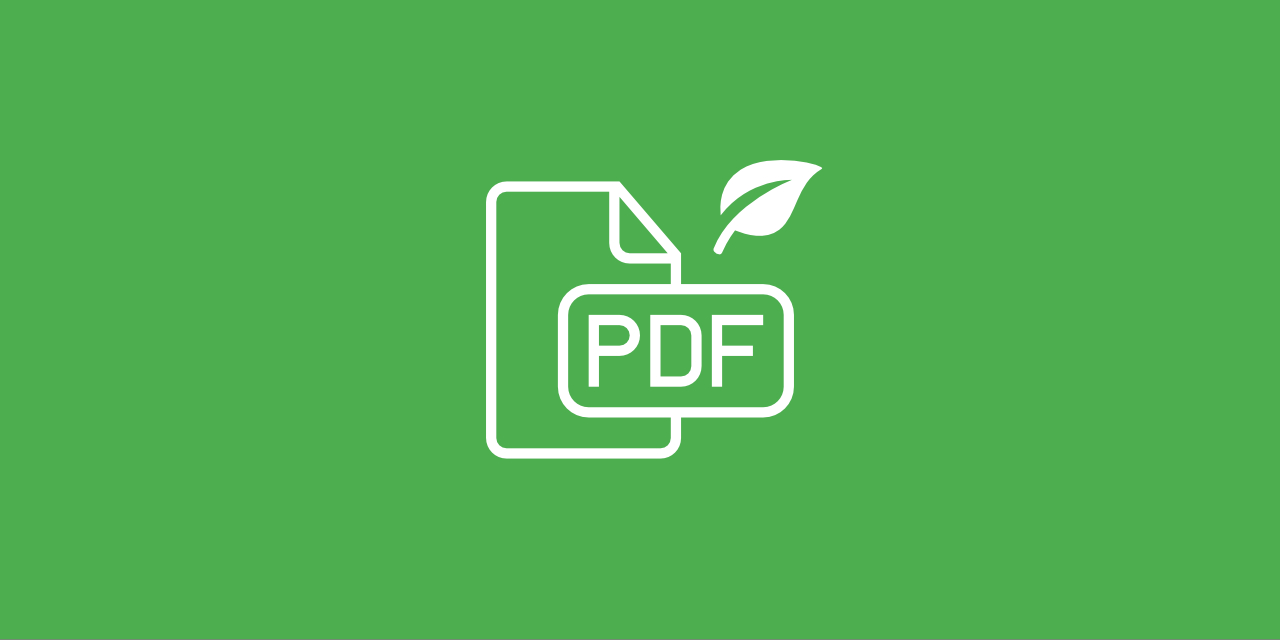
In our increasingly digital world, the importance of sustainability cannot be overstated. As we strive to minimize our environmental impact, every aspect of our daily lives, including how we manage and share documents, comes under scrutiny. Did you know that PDF (Portable Document Format), a versatile file format, not only streamlines document management but also contributes significantly to sustainability efforts? Discover more about the environmental benefits of PDFs.
How do PDFs contribute to sustainability?
PDFs offer a multitude of features that make them inherently sustainable.
The various ways in which PDFs contribute to sustainability efforts:
- Reduced Paper Usage: PDFs significantly decrease the need for printing, conserving paper resources.
- Compact and Lightweight: Designed to be compact and lightweight, PDFs optimize electronic storage and distribution efficiency.
- Paperless Workflows: PDF features such as electronic signatures and annotations support paperless workflows, reducing the reliance on physical documents.
- Energy Conservation: PDFs reduce energy consumption associated with printing and transportation of physical documents.
- Emission Reduction: By eliminating the need for physical document transportation, PDFs help reduce carbon emissions.
What is a Paperless Office?
A paperless office is one in which traditional paper-based processes and documentation are replaced or supplemented by digital alternatives. Instead of relying on printed documents, files, and records, businesses utilize electronic formats such as PDFs, cloud storage, and digital collaboration tools to create, store, and share information.
Environmental Benefits:
The shift to a paperless office offers numerous environmental advantages. By reducing or eliminating the need for paper, businesses can significantly decrease their consumption of natural resources, including trees, water, and energy used in the paper production process. Reducing paper usage helps mitigate the environmental impact of deforestation, water pollution, and carbon emissions associated with paper manufacturing and transportation.

Operational Efficiency:
Beyond its environmental benefits, the paperless office also enhances operational efficiency and productivity. Digital documents are easier to create, edit, and manage, reducing the time and resources required for document processing and storage. Additionally, digital workflows enable seamless collaboration among team members, regardless of location, facilitating faster decision-making and project execution.
Cost Savings:
Transitioning to a paperless office can also result in significant cost savings for businesses. By eliminating expenses related to paper, printing equipment, ink, and storage space for physical documents, organizations can reduce overhead costs and improve their bottom line. Moreover, digital processes streamline administrative tasks, freeing up resources that can be allocated to other strategic initiatives.
Practical Applications
The versatility of PDFs makes them suitable for various applications across different sectors.
- In business, PDFs are commonly used for documents and reports, enabling efficient sharing and collaboration without the need for printing.
- In education, PDF textbooks and materials reduce the demand for physical textbooks, thereby reducing paper consumption and environmental impact.
- Even in government settings, PDF forms and applications streamline processes and reduce administrative overhead.
Additional Benefits to Consider
Accessibility and inclusivity: PDFs support accessibility features such as text-to-speech and screen readers, making documents more inclusive for individuals with disabilities.
Global reach: PDFs facilitate global communication and collaboration by ensuring document consistency across different devices and platforms, thus reducing the need for localized printing and distribution.
Long-term preservation: PDFs are well-suited for long-term preservation of documents, ensuring that valuable information is accessible for future generations without degradation or loss.
Security and integrity: PDFs offer security features such as password protection and digital signatures, which help safeguard sensitive information and maintain document integrity.
In Conclusion
The adoption of PDFs in document management practices offers significant sustainability benefits. From reducing paper usage and carbon emissions to promoting paperless workflows and digital efficiency, PDFs play a vital role in minimizing our environmental footprint. As we continue to embrace digital solutions, let us leverage the power of PDFs to unlock a more sustainable future. Together, through conscious choices and responsible practices, we can make a positive impact.

